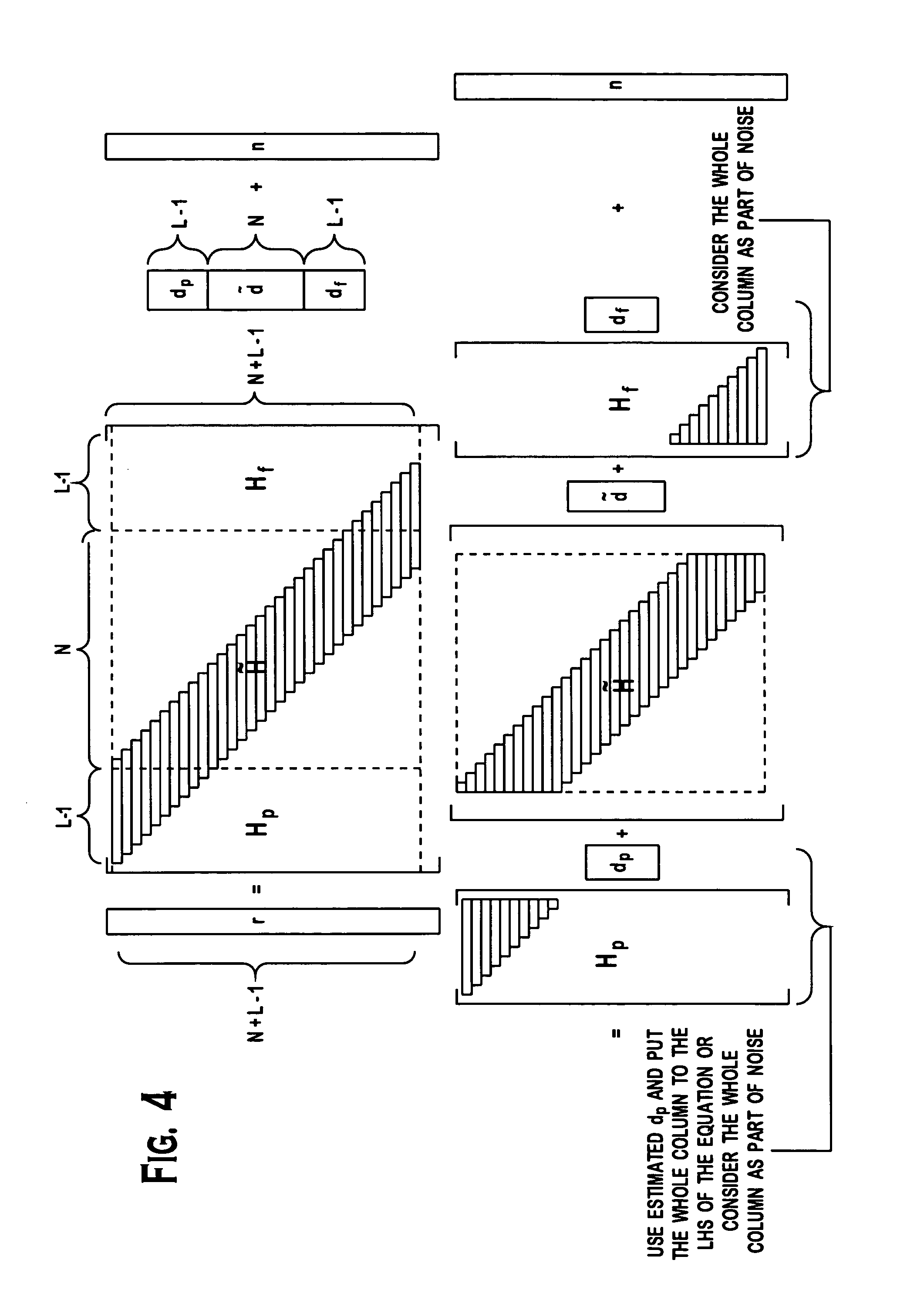Reduced complexity sliding window based equalizer
a sliding window and equalizer technology, applied in the field of data detection, can solve the problems of inaccurate data detection, inability to achieve practicality, and infinite number of received samples
- Summary
- Abstract
- Description
- Claims
- Application Information
AI Technical Summary
Problems solved by technology
Method used
Image
Examples
Embodiment Construction
)
Although the features and elements of the present invention are described in the preferred embodiments in particular combinations, each feature or element can be used alone (without the other features and elements of the preferred embodiments) or in various combinations with or without other features and elements of the present invention.
Hereafter, a wireless transmit / receive unit (WTRU) includes but is not limited to a user equipment, mobile station, fixed or mobile subscriber unit, pager, or any other type of device capable of operating in a wireless environment. When referred to hereafter, a base station includes but is not limited to a Node-B, site controller, access point or any other type of interfacing device in a wireless environment.
Although reduced complexity sliding window equalizer is described in conjunction with a preferred wireless code division multiple access communication system, such as CDMA2000 and universal mobile terrestrial system (UMTS) frequency divisi...
PUM
 Login to View More
Login to View More Abstract
Description
Claims
Application Information
 Login to View More
Login to View More - R&D
- Intellectual Property
- Life Sciences
- Materials
- Tech Scout
- Unparalleled Data Quality
- Higher Quality Content
- 60% Fewer Hallucinations
Browse by: Latest US Patents, China's latest patents, Technical Efficacy Thesaurus, Application Domain, Technology Topic, Popular Technical Reports.
© 2025 PatSnap. All rights reserved.Legal|Privacy policy|Modern Slavery Act Transparency Statement|Sitemap|About US| Contact US: help@patsnap.com



